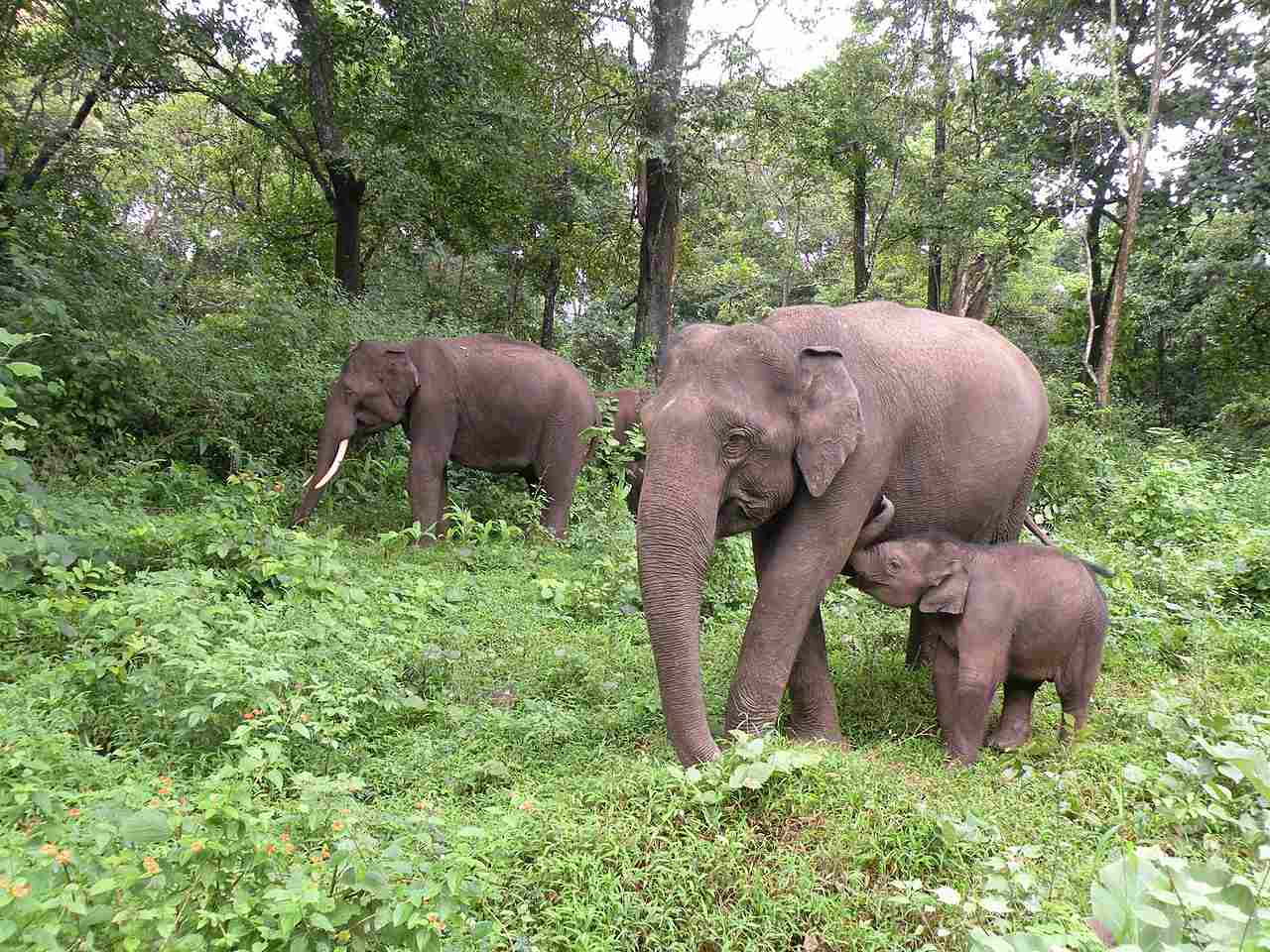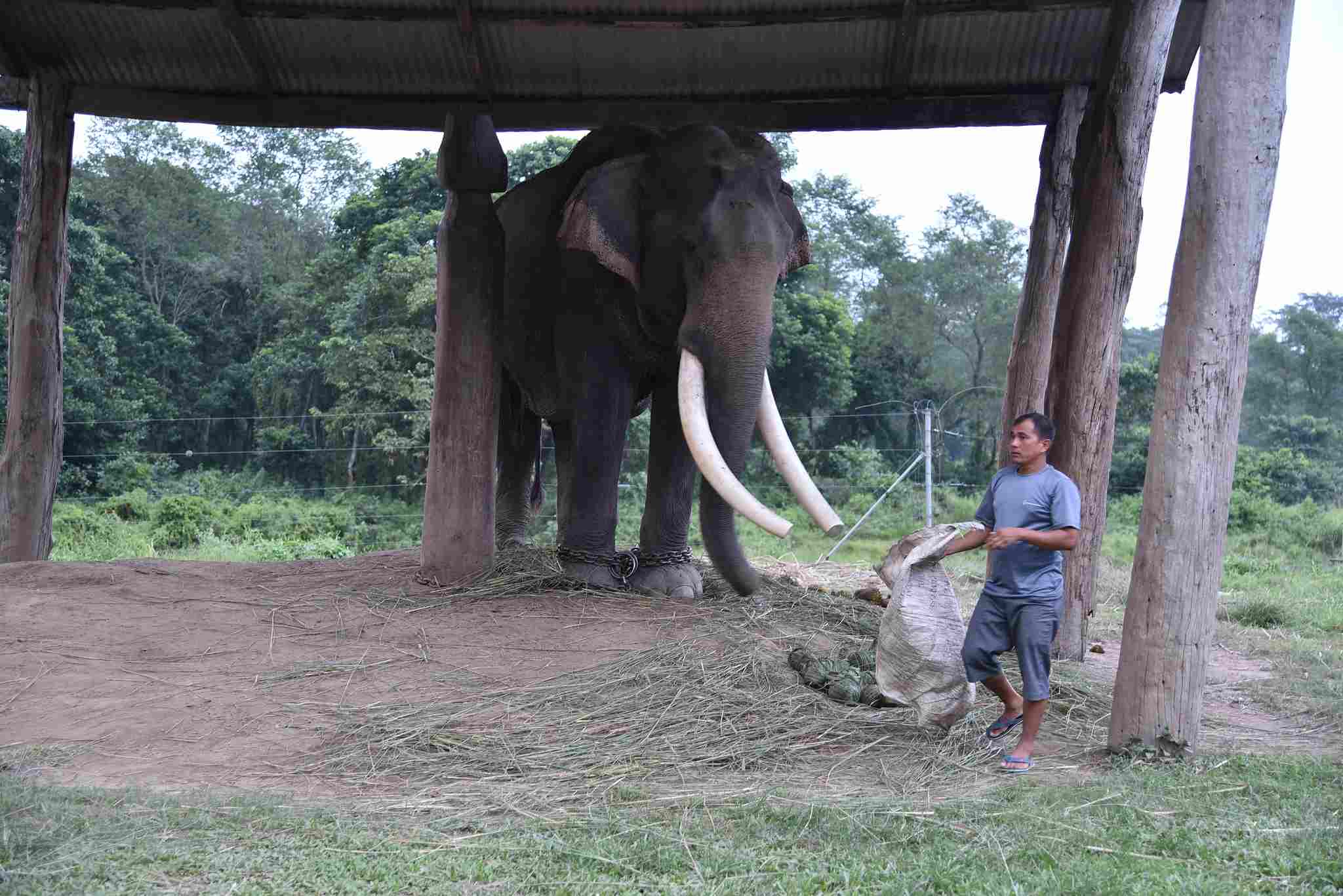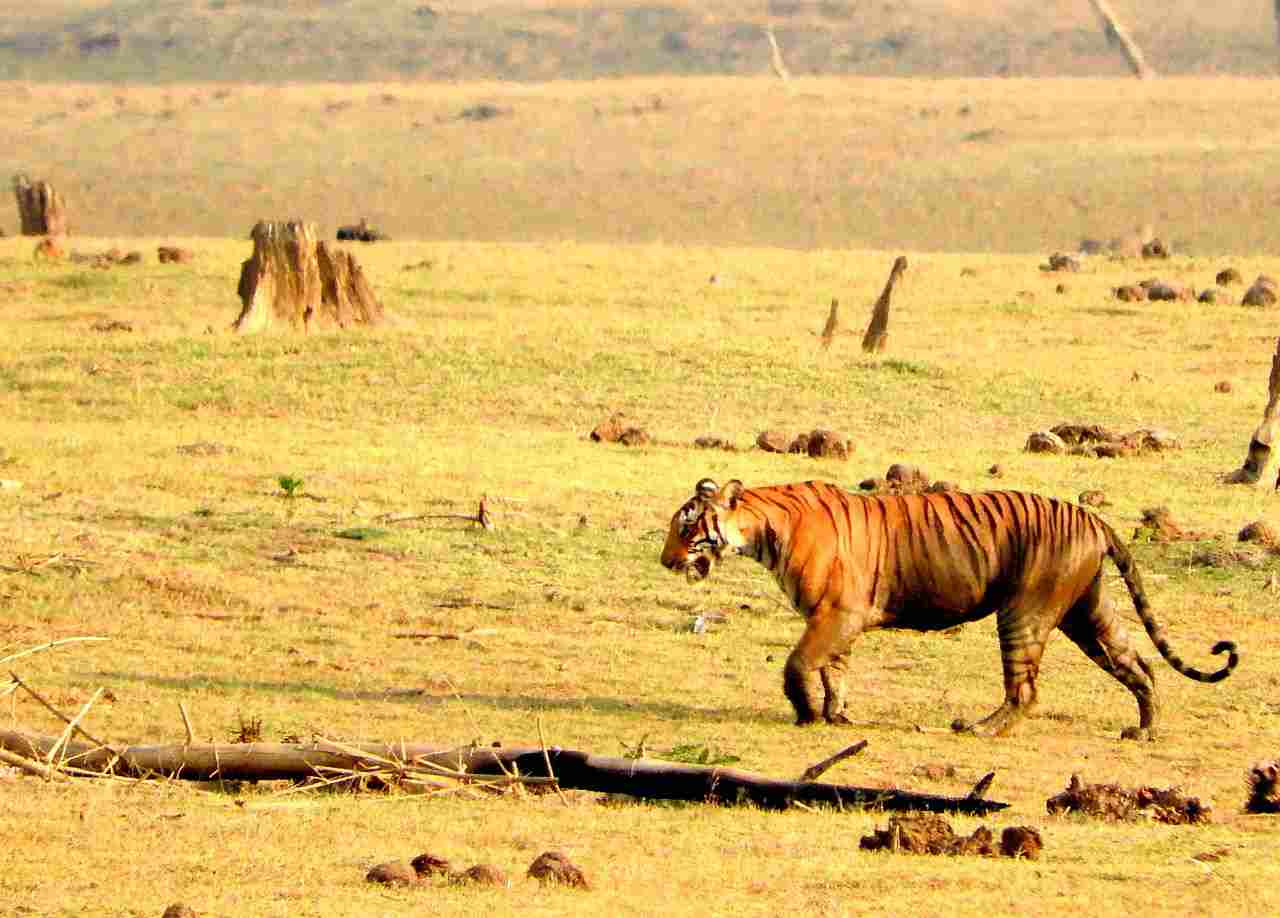Elephant Vs Tiger Size, Weight, Ecological Comparison
The size and weight of an elephant compared to a tiger play a significant role in determining the outcome of a confrontation between the two. Despite the tiger’s predatory adaptations, the sheer size and weight of an elephant give it a clear advantage.
In this article, we will explore various factors that can be used to compare these animals and understand why the elephant would overpower and potentially kill or fatally injure a tiger in a violent confrontation.
Key Outcomes
*Biological Comparison
The biological comparison between elephants and tigers reveals fascinating insights into these majestic creatures. Both belong to different genera and species, highlighting their distinct evolutionary paths. Elephants are classified under the genus “Elephas” and species “maximus,” while tigers fall under the genus “Panthera” and species “tigris.”
*Size and Weight Comparison
When it comes to size, elephants are undoubtedly larger than tigers. An adult male elephant can reach a height of up to 13 feet at the shoulder and weigh around 12,000 to 14,000 pounds. In contrast, tigers are much smaller, with males averaging around 3.3 to 3.9 feet in height at the shoulder and weighing approximately 400 to 600 pounds.
*Physical Capability Comparison
The physical capability comparison between elephants and tigers reveals that the elephant is indeed much stronger than the tiger. With their massive size and weight, elephants possess incredible strength, allowing them to perform tasks like lifting heavy objects and pushing down trees. On the other hand, tigers rely more on their agility and speed to hunt and capture prey.
1). Taxonomy
The taxonomy of elephants and tigers reveals interesting differences and similarities between the two species. Elephants belong to the family Elephantidae and are further classified into three species: the African bush elephant (Loxodonta africana), the African forest elephant (Loxodonta cyclotis), and the Asian elephant (Elephas maximus). Tigers, on the other hand, belong to the family Felidae and are classified as Panthera tigris.
In terms of genus and species, elephants are classified as Loxodonta africana, Loxodonta cyclotis, and Elephas maximus, while tigers are classified as Panthera tigris. Despite their different classifications, both elephants and tigers are mammals and share common characteristics such as being warm-blooded and giving birth to live young.
2). Appearance
Elephants and tigers have distinct appearances that reflect their unique adaptations and characteristics. Starting with their coats, elephants have thick, wrinkled skin that provides protection against the elements and helps regulate their body temperature. Tigers, on the other hand, have a beautiful striped fur coat that serves as camouflage in their natural habitats, allowing them to blend seamlessly into the surrounding vegetation.
In terms of stature and build, elephants are known for their large size and robust build. They have a massive body with a high shoulder height, giving them a commanding presence in their environment. Tigers, on the other hand, are more agile and sleek in their appearance. They have a slender body with a muscular build, enabling them to move swiftly and silently through the dense forests or grasslands where they reside.
When comparing the two animals, it is evident that elephants and tigers have contrasting appearances that align with their respective lifestyles and habitats. Elephants’ sturdy build and wrinkled skin are well-suited for their life in open savannahs or dense forests, while tigers’ striped fur and agile physique allow them to navigate stealthily through their preferred habitats.
3). Size
When comparing the size of elephants and tigers, it is important to consider their total body length and height at the shoulders. Elephants are known for their immense size, with adult males reaching an average length of 19 to 24 feet and standing at a shoulder height of around 10 to 13 feet. In comparison, tigers are relatively smaller, with an average body length of 6 to 9 feet and a shoulder height of 3 to 4 feet.
The size difference between these two animals is significant, reflecting their distinct ecological roles and adaptations. Elephants’ large size allows them to forage on tall trees and reach vegetation that is out of reach for other herbivores. Their height at the shoulders gives them a commanding presence and enables them to intimidate potential predators.
On the other hand, tigers’ smaller size is advantageous for their hunting strategies. Their agility and stealth are enhanced by their compact build, allowing them to move swiftly through dense vegetation and ambush their prey effectively. The smaller size of tigers also enables them to navigate more easily in their preferred habitats, such as forests and grasslands.

4). Weight
When comparing the weight of elephants and tigers, it becomes evident that there is a significant difference between these two majestic creatures. Elephants are known for their sheer size and weight, with adult males weighing an average of 5,000 to 14,000 pounds. In contrast, tigers are relatively lighter, with adult males weighing around 200 to 670 pounds.
The weight disparity between elephants and tigers is a result of their distinct lifestyles and ecological adaptations. Elephants require a substantial amount of body mass to support their massive frames and to provide the necessary strength for their daily activities. Their weight allows them to exert dominance in their habitats and defend themselves against potential threats.
On the other hand, tigers’ lighter weight is advantageous for their hunting strategies. Being agile predators, tigers rely on their speed and stealth to capture their prey. A lighter body weight enables them to move swiftly and silently through their natural habitats, making them more efficient hunters.
5). Speed and Agility
Elephants, despite their massive size, are surprisingly agile creatures. They can reach speeds of up to 25 miles per hour (40 kilometers per hour) when charging or running. However, their agility is more evident in their ability to navigate through dense vegetation and maneuver around obstacles in their habitat. This is made possible by their flexible trunks and strong limbs, which enable them to move with precision and grace.
On the other hand, tigers are renowned for their exceptional speed and agility. They are capable of reaching speeds of up to 40 to 50 miles per hour (64 to 80 kilometers per hour) in short bursts. This incredible speed allows them to swiftly chase down their prey and launch surprise attacks. Tigers also possess remarkable agility, which is crucial for their hunting strategies. They can make quick turns, leap great distances, and climb trees effortlessly, giving them a significant advantage in capturing their prey.
While elephants demonstrate surprising agility for their size, tigers are unmatched in terms of speed and agility. These characteristics are essential for both animals to thrive in their respective habitats and fulfill their ecological roles.
6). Bite Force
Elephants, with their massive size and strong jaws, possess an impressive bite force. Their bite force is estimated to be around 2,000 pounds per square inch (psi), allowing them to tear through vegetation and strip bark off trees. This immense bite force is crucial for their herbivorous diet and enables them to consume tough plant material.
On the other hand, tigers have a bite force of approximately 1,050 psi. This powerful bite force is essential for their carnivorous diet and enables them to subdue and kill their prey. Tigers can deliver a crushing bite to the neck or skull of their prey, instantly incapacitating them.
Elephants rely on their strong jaws to break down vegetation and extract nutrients from tough plant material.
7). Overall Physical Capacity (Which is Stronger?)
When comparing the overall physical capacity of elephants and tigers, several factors need to be evaluated and compared. Both animals possess unique strengths that contribute to their survival in their respective habitats.
In terms of size and weight, elephants clearly have the advantage. They are the largest land mammals, weighing up to several tons and standing at heights of over 10 feet. Tigers, on the other hand, are agile predators, known for their speed and stealth. They are smaller in size, but their muscular build and sharp claws make them formidable hunters.
In terms of raw power, elephants possess immense strength due to their size and muscular structure. They can uproot trees, push heavy objects, and even overturn vehicles. Tigers, on the other hand, rely on their agility, speed, and powerful jaws to subdue their prey. Their bite force is impressive, but it may not match the sheer force exerted by an elephant.
In a violent confrontation between an elephant and a tiger, the outcome would depend on various factors such as the element of surprise, the location of the attack, and the determination of each animal. While the tiger’s agility and predatory instincts give it an advantage in certain situations, the sheer size and strength of an elephant can be overwhelming.
8). Habitat
Elephants are primarily found in savannahs, grasslands, and forests across Africa and Asia. They are highly adaptable and can thrive in a variety of habitats, including deserts, mountains, and wetlands. Their large size and herbivorous diet require access to ample vegetation and water sources. Elephants are known to migrate in search of food and water, covering vast distances in their quest for sustenance.
Tigers, on the other hand, are predominantly found in dense forests, mangroves, and grasslands of Asia. They are highly territorial and require large areas of undisturbed habitat to hunt and establish their territories. Tigers are solitary animals and rely on camouflage and stealth to ambush their prey. Their habitat preference is influenced by the availability of prey species, such as deer and wild boar.
When comparing the habitats of elephants and tigers, it is evident that elephants have a wider geographic range and can adapt to a broader range of ecosystems. Tigers, on the other hand, are more specialized in their habitat requirements and are restricted to specific regions in Asia.
9). Lifespan
When comparing the lifespan of elephants and tigers, it is clear that there is a significant difference between the two species. Elephants have a longer lifespan compared to tigers.
Elephants have an average lifespan of around 60 to 70 years in the wild, although some individuals have been known to live up to 80 years or more. Their long lifespan can be attributed to their large size, slow rate of reproduction, and relatively low predation risk. Elephants also benefit from living in social groups, where they receive protection and support from other members of their herd.
On the other hand, tigers have a relatively shorter lifespan. In the wild, tigers typically live for around 10 to 15 years. This shorter lifespan is influenced by various factors, including predation, competition for resources, and the challenges associated with hunting and establishing territories. Tigers also have a slower rate of reproduction compared to elephants, which contributes to their shorter lifespan.
10). Behavior
In terms of feeding behavior, elephants are herbivores, primarily consuming grasses, leaves, bark, and fruits. Their diet consists mainly of plant material, and they spend a significant portion of their day foraging for food. Tigers, on the other hand, are carnivores and rely on hunting for their sustenance. They are skilled predators, stalking and ambushing their prey before delivering a swift and lethal attack.
Aggression is another aspect where the two species differ. While elephants are generally peaceful and non-aggressive, they can become aggressive when provoked or when protecting their young. Tigers, on the other hand, are known for their aggressive nature, especially when defending their territory or during mating encounters.
Vocalization is an important means of communication for both elephants and tigers. Elephants use a variety of vocalizations, including trumpeting, rumbling, and growling, to communicate with other members of their herd. Tigers, on the other hand, use a range of vocalizations, including roars, growls, and chuffs, to communicate with other tigers and mark their territory.
Social behavior also differs between the two species. Elephants are highly social animals, living in tight-knit family groups called herds. They exhibit complex social interactions, including cooperation, communication, and caregiving. Tigers, on the other hand, are solitary animals, with males and females coming together only for mating purposes.
In terms of parenting, elephants display strong maternal care, with females taking care of their young for several years. Tigers, on the other hand, have a more limited parental role, with females raising their cubs until they are old enough to hunt on their own.

11). Reproduction
Elephants and tigers have distinct reproductive strategies. Elephants are viviparous, meaning they give birth to live young. The gestation period for elephants is the longest among land mammals, lasting approximately 22 months. This extended period allows for the development of a highly developed calf at birth. Tigers, on the other hand, are also viviparous, giving birth to live cubs after a gestation period of around 100 days.
When comparing the reproductive capabilities of these animals, elephants have a lower reproductive rate compared to tigers. Elephants typically give birth to one calf at a time, with intervals of several years between pregnancies. Tigers, on the other hand, can give birth to a litter of two to six cubs, with shorter intervals between pregnancies.
The reproductive success of both species is influenced by various factors, including habitat availability, food availability, and social dynamics. Elephants rely on stable and abundant resources to support their reproductive needs, while tigers require a sufficient prey base for successful reproduction.
12). Danger Posed to Humans
When considering the danger posed to humans, both elephants and tigers have the potential to come close to human settlements. However, their behavior towards humans differs significantly. Elephants are generally peaceful animals and tend to avoid confrontations with humans. They may come close to human settlements in search of food or water, but they rarely exhibit aggression towards humans unless provoked or threatened. Tigers, on the other hand, are known to be more aggressive towards humans, especially if they feel threatened or if their natural habitat is encroached upon.
In terms of the rate of human deaths caused, tigers pose a higher risk compared to elephants. Tigers are apex predators and have been known to attack and kill humans, particularly in areas where their natural prey is scarce. Elephants, although they can cause accidental deaths due to their sheer size and strength, are not typically aggressive towards humans unless they feel threatened.
If you encounter either of these animals in the wild, it is important to exercise caution and take necessary precautions. When encountering an elephant, it is best to keep a safe distance and avoid any sudden movements or loud noises that may startle them. In the case of a tiger encounter, it is crucial to maintain eye contact, make yourself appear larger, and slowly back away without turning your back.
While both elephants and tigers have the potential to pose a danger to humans, tigers are generally considered to be more aggressive and have a higher rate of human-caused deaths.

13). Conservation Status
The conservation status of elephants and tigers is a matter of great concern due to the threats they face in the wild. Both species are classified as endangered or threatened, highlighting the urgent need for conservation efforts to protect their populations.
For elephants, the main threats to their survival in the wild include habitat loss, poaching for ivory, and human-wildlife conflict. Deforestation and human encroachment on their natural habitats have resulted in a significant reduction in their range. Additionally, the illegal ivory trade continues to drive poaching, leading to a decline in elephant numbers. Efforts to conserve elephants focus on protecting their habitats, implementing anti-poaching measures, and promoting community-based conservation initiatives.
Tigers, on the other hand, face similar challenges in terms of habitat loss and poaching. Destruction of forests and conversion of land for agriculture have fragmented their habitats, making it difficult for tiger populations to thrive. Poaching for their skin, bones, and other body parts also poses a significant threat to their survival. Conservation efforts for tigers involve establishing protected areas, strengthening anti-poaching measures, and raising awareness about the importance of tiger conservation.

Conclusion
I). SIMILARITIES
When comparing elephants and tigers, several similarities can be observed. Both animals are large and powerful, occupying the top of their respective food chains. They are also highly adapted to their environments, with unique physical characteristics that aid in their survival. Additionally, both elephants and tigers are iconic species that hold cultural and ecological significance.
II). DIFFERENCES
Despite their similarities, elephants and tigers also have distinct differences. One notable difference is their size and weight. Elephants are the largest land mammals, weighing several tons and standing tall with their impressive tusks.
Tigers, on the other hand, are agile predators, known for their sleek and muscular bodies. Another difference lies in their habitats and behavior. Elephants are social animals that live in herds and require vast areas of land to roam, while tigers are solitary creatures that inhabit dense forests.



